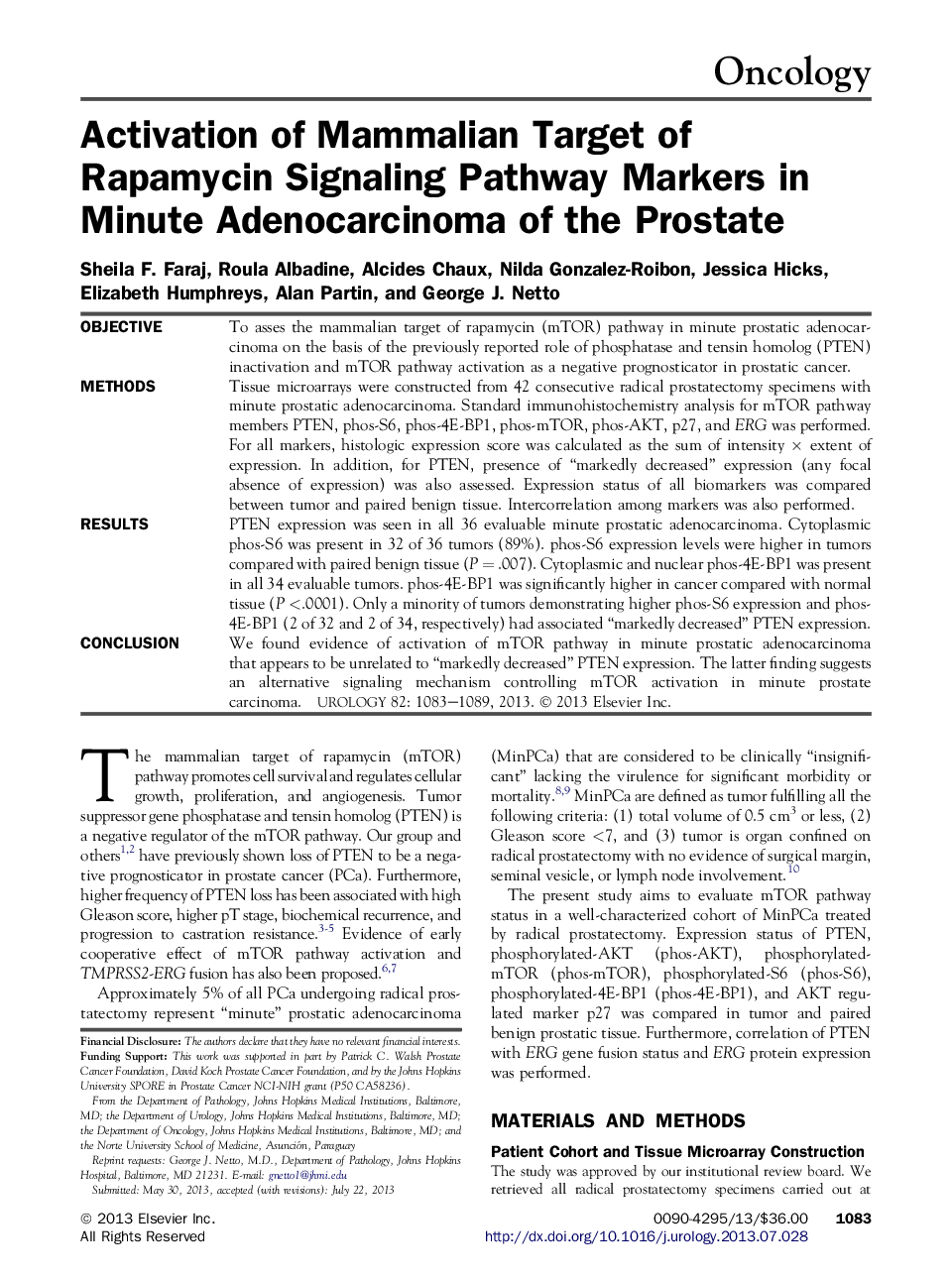| Article ID | Journal | Published Year | Pages | File Type |
|---|---|---|---|---|
| 3899232 | Urology | 2013 | 7 Pages |
ObjectiveTo asses the mammalian target of rapamycin (mTOR) pathway in minute prostatic adenocarcinoma on the basis of the previously reported role of phosphatase and tensin homolog (PTEN) inactivation and mTOR pathway activation as a negative prognosticator in prostatic cancer.MethodsTissue microarrays were constructed from 42 consecutive radical prostatectomy specimens with minute prostatic adenocarcinoma. Standard immunohistochemistry analysis for mTOR pathway members PTEN, phos-S6, phos-4E-BP1, phos-mTOR, phos-AKT, p27, and ERG was performed. For all markers, histologic expression score was calculated as the sum of intensity × extent of expression. In addition, for PTEN, presence of “markedly decreased” expression (any focal absence of expression) was also assessed. Expression status of all biomarkers was compared between tumor and paired benign tissue. Intercorrelation among markers was also performed.ResultsPTEN expression was seen in all 36 evaluable minute prostatic adenocarcinoma. Cytoplasmic phos-S6 was present in 32 of 36 tumors (89%). phos-S6 expression levels were higher in tumors compared with paired benign tissue (P = .007). Cytoplasmic and nuclear phos-4E-BP1 was present in all 34 evaluable tumors. phos-4E-BP1 was significantly higher in cancer compared with normal tissue (P <.0001). Only a minority of tumors demonstrating higher phos-S6 expression and phos-4E-BP1 (2 of 32 and 2 of 34, respectively) had associated “markedly decreased” PTEN expression.ConclusionWe found evidence of activation of mTOR pathway in minute prostatic adenocarcinoma that appears to be unrelated to “markedly decreased” PTEN expression. The latter finding suggests an alternative signaling mechanism controlling mTOR activation in minute prostate carcinoma.
